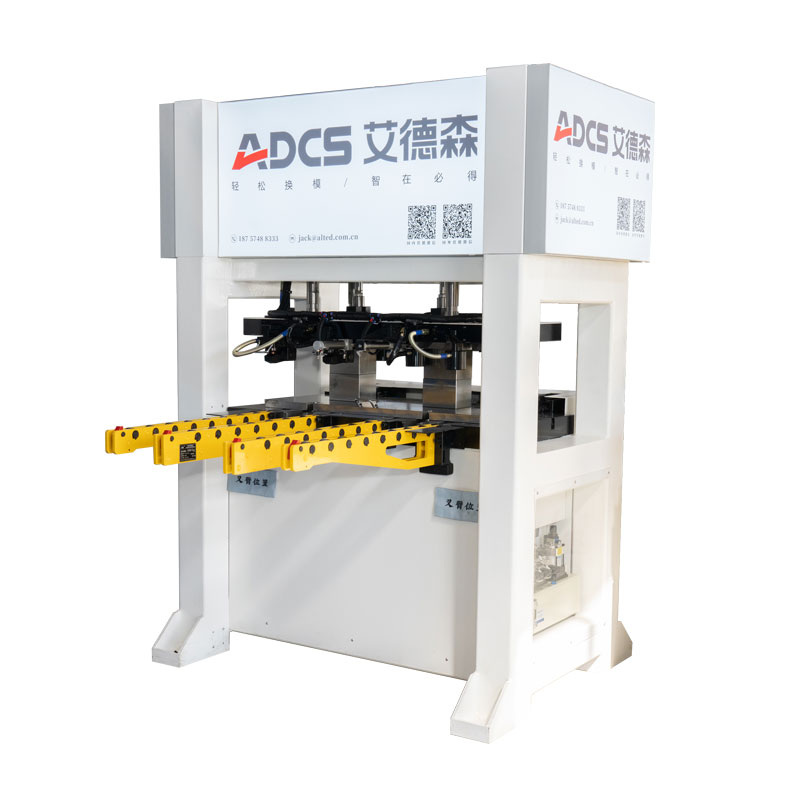Compared to traditional manual labor, how much can the Quick Die Change System reduce manual operation risks during mold changes?
2025-10-14
During factory operations, technicians using traditional manual mold changers were always worried about potential safety accidents. Now, many factories have installed the Quick Die Change System, which has significantly reduced manual operation risks. This is especially true for high-risk steps that can easily injure hands and feet. These steps can now be largely replaced by the system, making it much safer.
Risks of Traditional Manual Work
Traditional mold changes rely entirely on manual labor. For example, molds can weigh hundreds of kilograms, while lightweight ones can weigh dozens. These workers rely on prying with crowbars and pushing with their hands. Even a slight misalignment can cause the mold to fall, often resulting in injuries to hands or feet. Furthermore, tightening the screws securing the mold previously required climbing up to the machine, holding the machine with one hand and turning the wrench with the other. If their footing slipped, they could fall into the machine, or the wrench could slip and hit them. Furthermore, mold changes require frequent on/off switching and adjustments. Manual operation can easily lead to accidental button presses or poor coordination with nearby personnel. For example, while someone is adjusting a mold, someone else might accidentally start the machine, potentially causing a crushing injury. These risks are not insignificant, and nearly every technician who has performed manual mold changes has encountered them at some point.

Reducing the Risk of Trauma
The most significant improvement of the Quick Die Change System is that it takes over the heavy lifting and carrying of molds, significantly reducing the risk of crushing injuries. The system features dedicated mold lifting and transfer devices, such as hydraulic trolleys and rail-based transfer mechanisms. Molds can be precisely placed into the equipment by a robotic arm or trolley, eliminating the need for manual handling. Technicians simply press a button to operate the system. Furthermore, the system's clamping mechanism is automated, eliminating the need for manual labor to reach over and tighten screws. Technicians no longer have to "hang over" the equipment while working, eliminating the risk of falls or collisions. Technicians used to complain of "hearts in their throats" when tightening screws, but now, with the push of a button, automatic clamping provides greater peace of mind.
Reducing the Risk of Misoperation and Coordination
In addition to the heavy lifting, the Quick Die Change System also manages many details prone to manual error, further reducing the risk of misoperation and misalignment. Traditionally, when changing molds, turning equipment on and off, and adjusting mold positions, relies entirely on manual coordination, such as "Start the machine!" or "Move a little to the left." Mistakes can easily occur if someone misses the instructions or is slow to respond. The Quick Die Change System features a coordinated control function. For example, if the mold isn't in place, the machine won't start at all. While operators are operating, the console provides clear indicators and audible prompts, such as "Mold not clamped, please check," to prevent accidental button presses. Furthermore, the system can accurately adjust position down to the millimeter, eliminating the need for someone to lean over the equipment to check its position, and preventing the risk of pinching someone's head or hands.
 English
English Español
Español Português
Português русский
русский Français
Français 日本語
日本語 Deutsch
Deutsch tiếng Việt
tiếng Việt Italiano
Italiano Nederlands
Nederlands ภาษาไทย
ภาษาไทย Polski
Polski 한국어
한국어 Svenska
Svenska magyar
magyar Malay
Malay বাংলা ভাষার
বাংলা ভাষার Dansk
Dansk Suomi
Suomi हिन्दी
हिन्दी


